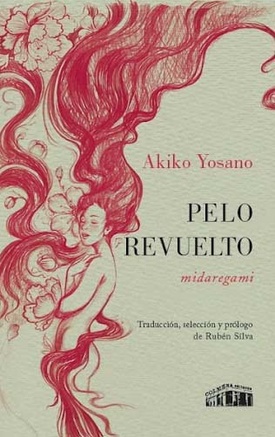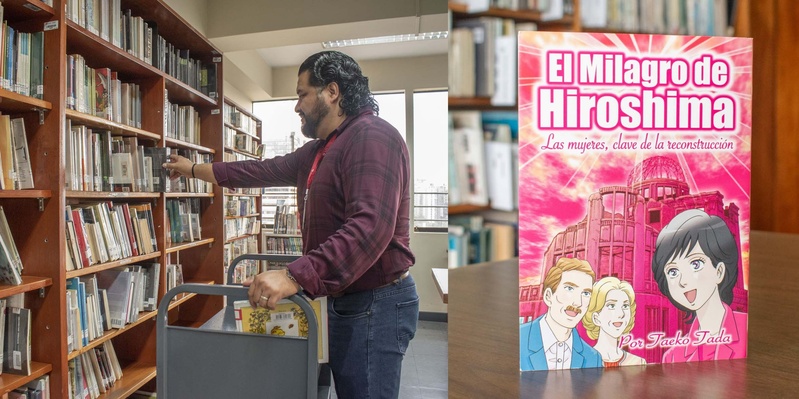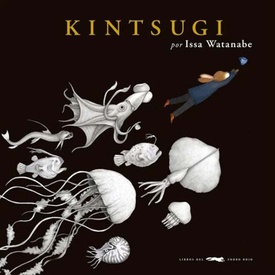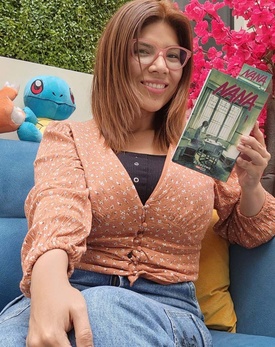At the risk of optimism being refuted with regional reading level indicators, some of the initiatives to promote reading in Peru show that there is an interest in the reading public that, however scarce, responds to the proposals that remain in some Lima spaces. This brief account of those that have made way for Nikkei literature can continue to grow with other individual projects or that cover other types of books.
First of all, there must be, without a doubt, the Elena Kohatsu Library , of the Peruvian Japanese Cultural Center, which carries out activities to promote reading and disseminate Japanese and Nikkei culture, such as storytelling, manga workshops and book presentations. According to Juan Bravo, coordinator of this space, “we promote our collection with monthly book alerts and we participate in external activities such as fairs and exhibitions to which other sister institutions or friends invite us.”
Bravo says that for this year they plan to make agreements with some schools and continue spreading the importance of culture and its values in society to new generations. In February of this year they did a story-telling with the books The Old Man Who Made the Flowers Bloom and The Gratitude of the Crane , for children from 8 to 12 years old. And the fact is that the library is mainly visited by children, young people and adults in search of manga due to its large collection.
“Then, there are several researchers and people looking for issues of Japanese immigration to Peru,” adds Bravo. Japanese cuisine and crafts are usually other frequently consulted topics. Among the most sought-after Peruvian Nikkei writers are the poets José Watanabe and Doris Moromisato. The support of the Editorial Fund of the Peruvian Japanese Association (APJ) is valuable to nourish the library of contemporary authors and the Japanese classics that they usually publish.
Nikkei and Japanese authors
In April 2023, the Nikkei writer Augusto Higa died, which revived interest in his work through tributes, discussions and other activities at the House of Peruvian Literature, the International Book Fair, the Raúl Porras Barrenechea Institute, among others. . Much of his work is located in the Elena Kohatsu Library.
“Augustus gives us a particular look at madness, delirium, death, among other topics that obsessed him. He was a Nikkei in his training, but surrounded by the Creole atmosphere of the popular neighborhoods of Lima, which is why I perceive as one of his great virtues that he managed to order the disorder of reality, the chaos, through the figures he used, his style, and the silences, which brings together the best of both identities,” says Diego Bardález, editor of some of his latest books.
Other Nikkei authors have found editorial interest in 2023 to continue publishing, as is the case of Carlos Yushimito ( the stories of “The inevitable weight of pigeons” ), Tilsa Otta (the poetry collections Life has already surpassed writing and Two small islands staring at each other , published in Argentina), Miguel Ángel Vallejo Sameshima ( Don't read books about zombies , for children) and Issa Watanabe ( Kintsugi , illustrated book published in Spain), among others. Tilsa Otta was also the winner of the 10th ICPNA Children's Poetry Biennial 2023 with the book Hidden Poems .
“At the level of promotion, identities generate a little more attention from the media,” explains Bardález, who believes that the situation of Nikkei writers in Peru is not much better than that of other writers in the country. For this reason, it is important to promote authors through publication, editing, festivals and mediation. “Currently, I see that what is missing is the work of training the public for the arts and literature, which must be urgently reinforced by the State, civil society and the private sector,” he says.

On the other hand, Japanese letters have also made their way in Peru thanks to the translation of books such as Pelo revuelto (" Midaregami "), by the poet Akiko Yosano (by Rubén Silva and published in the country by Colmena Editores) and The Miracle of Hiroshima , by Taeko Tada, in a manga version donated by Dr. Hiroko Izumi Shimono, translator of these and other important traditional Japanese works, including the legendary The Tale of Genji , published by the APJ.
Manga and cinema
Reading today takes more visual forms with manga and cinema, two forms that go hand in hand with the experience of reading and imagining real or fantastic stories.
The journalist Sofía Pichihua runs the blog Otaku Press , which has among its themes Japanese books and manga that “now have more visibility in cultural places such as libraries or comic libraries, including the National Library. In addition, there are more frequent otaku events nationwide that include sales and exhibitions of manga.”
Sofía says that publishers have also expanded the publication of manga in digital format, such as the Manga Plus app or Kodansha. He adds that in Peru there is official distribution of publishers such as Panini, Kamite, Planeta and Distrito Manga. The valuable thing about manga is that there is something for all tastes. “Action themes are the most popular and the classics don't fail, like Dragon Ball . The popularity of Naruto and One Piece will continue. I would recommend mangas of other types of interest, for example, if you like art, Bakuman or Blue Period .”
Cinema has helped make anime more popular, such as Demon Slayer or Spy x Family , which come from manga, or Suzume and The Boy and the Heron, which have achieved Oscar and Golden Globe Award nominations. With Otaku Press, Sofía seeks to promote more genres of manga because “there is something for all tastes and profiles,” especially the legal editions. To do this, he has been talking with Peruvian manga creators, such as We are gamers, and foreigners.
If the efforts of writers, editors, translators, libraries, mangakas and communicators are sufficient to open the necessary spaces for the publishing industry to increase its offer and the work of Nikkei, Peruvian, Japanese and foreign writers to reach a larger audience in Peru and awaken their interest is something that will depend only on those future readers and those who have the opportunity to give them the opportunity to open a book.
© 2024 Javier García Wong-Kit









